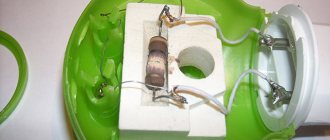If moles appear on a personal plot, then over time this turns into a rather serious problem. And if a couple of individuals do not cause significant harm, then as their offspring grow up, both garden crops and the lawn will begin to suffer.
Specimens with a fragile root system such as cucumbers are primarily at risk. Animal settlements are especially common in dachas with fertile and loose soil. In such a substrate there are quite a lot of insects, snails, and worms, which are actively consumed by small animals.
Simple do-it-yourself mole traps
The most convenient solution to the question of how to catch a mole is to use purchased equipment. However, in general, such devices are more aimed at scaring the animal away from the territory. This approach not only requires financial investments, but is also not always effective. From this article you will learn all the intricacies of the fight against underground inhabitants. You can make some devices yourself.
How to catch with a shovel
A fairly old method of getting rid of a pest, which only requires patience. In this case, you can go in several ways:
- If you notice that the animal has begun to throw soil to the surface, with a sharp movement stick the tool across the already dug passage. As a result of the manipulations, the animal will be pushed out.
- The second way to use the equipment is that they first need to crush a fresh pothole. When you find that the soil has deformed again, block the mole’s path from behind with one shovel, and the second from the front. Afterwards, all that remains is to dig up the ground from below along with the animal.
Plastic bottle: simple drawing and installation
One of the most humane ways to catch a mole is to use PET bottles. Such a homemade product will not cause damage either to the object of the hunt or to other living creatures. You will need three containers. The optimal volume of containers used is 1.5 liters. The animal simply will not fit into a smaller bottle, and your efforts will be in vain.
Creation technology:
- Cut off the bottom and top of one bottle with scissors so that you end up with a cone.
- For other containers, you need to separate the neck so as not to touch the soft part of the plastic. On the base, make cuts in the form of 10 petals. Turn it upside down, place it in the part with the bottom, secure with tape.
- The principle of the plastic device is that once an animal gets inside, it will not get out. The reason is that it will not be able to move the “petals” apart. It is better to set the trap no later than an hour before sunset, taking into account the high activity of moles at night.
This is interesting: if you do not intend to exterminate the animal, then take it as far as possible from the location, because moles are able to return to their abode, even if they need to travel 1 km.
Fishing with hooks
For this method you will need a pair of fish hooks, preferably three-pointed ones. They must be installed on both sides of the hole you have freshly dug. For reliability, connect the gear with a wire rope so that the mole does not drag them underground.
Other mole traps, their advantages and disadvantages
No less often than pipe-shaped live traps, slightly less convenient methods of catching moles are used: in buckets, deep pans, glass jars or wide plastic bottles with a cut neck. They are buried in the gap in the mole's passage, the edges are covered with a roller of compacted earth, and the opened passage is covered on top with boards so that sunlight does not enter it.
Moving along the way, the mole simply falls into such a trap “pit” and cannot get out of it. When checking, the animal is taken out with a gloved hand and taken away from the site. This method is also quite effective, although it is more labor-intensive to implement than using a good pipe mole trap.
Unfortunately, moles are also often killed with special traps (crushes, crossbows, snares...) Their designs are varied, but their main disadvantage is the inhumane destruction of animals, which are only to blame for the fact that they turned out to be a person’s neighbors in the area.
But various methods of repelling moles are for the most part less effective than traps. Many of them do not always work (for example, noise, as well as rotten fish, perfume, ammonia, carbide), others are harmful to the soil and its inhabitants (pouring kerosene, gasoline into holes, pouring Alphos tablets, fumigating with insecticidal and sulfur bombs). But the effectiveness of other methods is initially questionable: sticking reeds into the ground, burying feces in underground passages, etc.
In some cases, special mole repellers (not all models on the market) provide a good repellent effect. However, read more about repellers in other articles on our website. And before that, do not forget to leave a review about your personal experience of using a mole trap-pipe, if you have such experience (to leave a review, just write it in the comment field at the bottom of this page).
Another effective, but inhumane method is to catch a mole like a fish on an improvised “donka”.
Too much water can kill plants.
Complex traps
There are also more serious designs of mole traps, the manufacture of which should be approached with great diligence or purchased at a specialized store. Energy and financial costs will be fully compensated by efficiency.
Pinwheel
The use is more aimed at repelling underground pests. To create a pinwheel you will need a metal pin and one or more tin cans.
Choose reinforcement approximately two meters high. It must be firmly stuck into the ground and a makeshift weather vane placed on top. To create it, the tin is cut in three places and the plates are folded back like airplane blades.
Loop trap for mole
You can catch a mole in the garden using this homemade product. There are plenty of drawings and videos of creating a mole trap with your own hands using this principle. They reveal all the intricacies of making the device.
Plunger design
The mole will not be able to survive if such a system is used, and independent production requires certain skills.
The advantages of a purchased device include:
- high power;
- the trigger mechanism is triggered by the movement of the substrate during the restoration of the tunnel by the mole;
- does not require adjustment before installation.
The disadvantages include difficulties during installation and operation on rocky soil, because the mechanism can jam.
How to catch moles with a wire mole trap
It consists of several parts - a guard and a frame made from a single piece of wire with a diameter of 3.2-4 mm. The pressing part is a lever that operates on the principle of a spring. A trap is set in a fresh tunnel, passing through which the mole ends up in a deadly loop. As a result, the animal is nailed to the ground with a force equal to 2 kg.
The most effective way is a tunnel trap
An excellent opportunity to catch the pest is to use a tunnel trap. This device is a pipe-type structure with a mechanism that kills the animal. It is highly effective and has many advantages:
- low complexity of installing the device (it is enough to cover it with soil);
- adjusting the sensitivity of the mechanism;
- the ability to use at any time of the year without reducing efficiency (in the winter and autumn months it is enough to cover the device with peat or plywood);
- identical effectiveness in deep and shallow passages;
- minimal risk of the mechanism jamming when stones and clods of soil enter.
Such a trap is one of the most effective ways to catch a mole. The disadvantages include the fact that the trap and its operation are invisible on the surface, and therefore require the installation of landmarks.
Scissor trap
It is a completely reliable device with its pros and cons. Positive characteristics include simplicity of design, ease of installation (you just need to stick it in the ground) and the ability to observe the operation from a distance.
However, “scissors” also have significant disadvantages, including:
- The mole breaker is ideal for medium-deep tunnels (deep or shallow holes reduce productivity);
- inability to stand without loss of quality under unfavorable climatic conditions (in cold weather the handles jam, which prevents the mechanical part from operating);
- During the rainy season, the trap becomes noticeable due to the erosion of the soil by precipitation.
This is interesting: if there is a pond or decorative pond on the site, then one of the animal’s passages will definitely lead to it due to the animal’s need for drinking.
How to catch a mole using a three-liter jar
The simplest do-it-yourself mole trap, which allows you to save the life of the pest.
Prepare the jar
The best option is a 3-liter container. You need to choose it without chips, food residues or chemicals. Alternatively, you can use a small bucket or a plastic five-liter bottle with the neck cut off.
Dig a hole
Dig a hole at the site of the mole's fresh tunnel at least 30 cm deep. There is no need to worry that the animal will not return to the already dug corridor - animals periodically use them in search of food. The location of the tunnel can be determined by small piles of earth on the surface, which the mole pushes out while moving.
Place the container in the desired location
Dig the jar into the soil so that the neck is located at the base of the underground passage. Making his way through his tunnel, the mole will not notice the hole and will fall into the container. Compact the soil along the sides of the jar. Cover the top with plywood. If you intend to save the mole’s life, then throw worms to the bottom, which will also become an excellent bait.
Advantages and disadvantages
Like any approach to catching a mole, using a jar has its positive and negative sides.
The advantages include:
- humaneness (the animal remains unharmed provided it is not trapped for a long period without food);
- efficiency;
- ease of installation;
- environmental friendliness;
- safety.
Among the shortcomings, it can be noted that if you choose a mole hole that is too old, then instead of the expected prey, only small rodents may be caught.
Homemade mole trap made from plastic pipe
The main material for making a trap is a piece of such diameter that the animal will fit into it. Improvised doors made from tin cans are installed on both sides so that they open exclusively inward. You can attach them using thick wire.
The principle of operation is based on the fact that the animal gets inside, but cannot open the next door. There are often cases when several individuals end up in a mole trap.
Tip: to determine whether an animal is caught in a trap or not without digging it out of the soil, first drill several holes in the pipe. If you stick a stick into them, it will become clear whether there are living creatures inside.
Designing a crossbow
You can independently make both a regular mole trap and a full-fledged crossbow. However, this method of eliminating animals is quite sophisticated and requires considerable effort to produce.
Operating principle:
- A pipe with a sealed end is placed in the path of the mole, which must be loaded with a mixture of gunpowder and shot.
- A nichrome wire is supplied to the charge, which is additionally connected to a motion sensor - it is installed at a distance of 30 cm from the tunnel.
- After the motion sensor is triggered, the battery instantly heats up and a shot occurs.
How to catch a mole in a jar?
There is another method that has been tested many times in practice to catch a mole: in a jar, pan, bucket or plastic bottle with the top cut off. This kind of mole trap can also be easily done with your own hands - for this you will need to make a kind of trap pit.
Let's look at the manufacturing procedure for this mole trap:
- You can take a large five-liter plastic drinking water bottle; you need to cut off the tapered top. Some gardeners successfully use three-liter glass jars - their width is quite sufficient for a mole to be caught in them (the animal is comparable in size to a rat). You can also use a suitable size pan or bucket; it is only important that the height of the trap is at least 25-30 cm, otherwise there is a chance that the mole will get out of it;
- Then the mole's passage is excavated and a hole is dug, identical in diameter and height to the trap;
- A prepared mole trap (container) is inserted into the hole;
- After this, the cracks along the edges of the trap are filled with earth, the earth here is compacted a little. As a result, the edges of the container should be hidden with a compacted earthen roller so that the mole does not feel them;
- The top of the trap is covered with a wooden shield or thick fabric so that light does not penetrate into the trap and does not scare away the animal.
Such a mole trap, installed in a gap in the underground passage of the mole, works even simpler than the one described above from two plastic bottles. The animal simply falls into the jar (or other deep container), moving along its course.
You also need to check the trap at least twice a day so as not to starve the caught animal.
Lethal means
In the fight for territory, you can also resort to the use of pesticides. However, in this case, it will not be possible to exterminate the animals by poisoning the bait due to the fact that moles feed on insects and bugs.
The best option is to use substances and preparations that are distributed in the air space of the soil and act through evaporation.
- Calcium carbide. The use of a solid substance is due to the calcium phosphide and acetylene contained in the composition, the vapors of which are toxic to living beings (including the owner of the site). To achieve the result, you need to place several weighty pieces of carbide in a plastic bottle and pour in water, and place the container itself with the neck inside the underground passage. As a result of a chemical reaction, accompanied by active seething, gas will be released, which will cause significant damage to the health of the animal.
- "Alphos the mole." The principle of operation is approximately the same as in the case of carbide. The product is a tablet with aluminum phosphide. This poison has a destructive effect on both animals and insects. “Alphos mole” is buried in the ground, and when exposed to humidity, toxic gas is released.
- "Detia". A drug intended not to exterminate living creatures, but to repel them. During the use of granules, it is not a poisonous gas that is released, but evaporation of essential oils, the smell of which is unpleasant to moles.
- "STOP-Mole." A specialized product for exterminating earth-moving animals. Presented in the form of tablets that need to be buried in the mink area. It is best to carry out manipulations in the middle of daylight hours when the pest is hibernating.
- Green house ANTICROT. The chemical has a completely different principle of action. Acts as a bait, which contains food elements that enhance the perception of the drug as a source of nutrition. The damaging substance is bromadiolone, which contributes to the deterioration of the blood clotting of an animal or insect. As a result, after a few days the mole rat dies.
Plunger traps, including Skat 61 and Skat 62
The plunger traps Skat 61 and Skat 62 are designed to kill moles, and therefore, generally speaking, their use in a civilized economy is undesirable.
The operating principle of these traps varies:
- The Skat 61 mole trap uses the principle of a crossbow. Its legs are stuck into the ground on the sides of the mole’s move, and after the spring is cocked, the guard is inserted into the move itself. When the mole hits the guard, the spring is released and the mole is pierced by three spokes. In many cases, death does not occur immediately, and the animal suffers for several tens of minutes;
- In Skat 62, the principle of operation is similar, but after touching the guard, the spring compresses the brackets, which crush the animal (or part of it) together.
We suggest you read: How to choose and make a frame for a greenhouse
The disadvantage of these traps lies not only in the inhumane nature of their use, but also in the fact that once triggered, the device no longer works until it is freed from the corpse and re-armed. For comparison: the same mole traps, pipes or pits, catch as many moles as the number of them that can fit in the trap.
That is, despite the fact that Skat 61 and Skat 62 are positioned as professional plunger traps for moles, they are noticeably inferior to live traps in terms of their effectiveness.
Planting repellent plants
This method of pest control is not as effective when compared with the use of various traps and baits. In addition, achieving results requires patience. However, the advantages include the opportunity to further improve the garden plot.
Among the “live” mole repellents are:
- Flower crops. These include marigolds, sage, calendula, chrysanthemum, irises, petunia, nasturtium, imperial hazel grouse, and Siberian scilla. It is recommended to plant them near the beds. It is also permissible to use infusions based on these plants.
- Garden crops such as potatoes, tomatoes, onions (including decorative ones), garlic, parsley, caraway seeds, dill. The effectiveness of planting crops is due to the high content of phytoncides in them, which have a repellent effect on moles.
- Insecticides of wild origin, some of which are harmful to humans. Among the safe ones are bird cherry, tobacco, spurge, burdock, mustard, and wormwood.
How to protect the area from repeated penetration of moles
Catching moles is usually not an easy task. Therefore, even if you win the first stage of the war with earth-moving animals, you need to take care of the subsequent protection of the site from repeated invasion.
This is interesting: moles rarely live alone. In most cases, a whole family is located on the site, which can reach several dozen in number.
To prevent the appearance of individuals, you should adhere to a number of recommendations:
- Stretch a metal or plastic mesh along the entire perimeter of the site so that it protrudes above the ground by 20 cm and is submerged by 70. You can also use slate, PVC or polycarbonate as a barrier structure using the same principle.
- A shallow ditch dug out and filled with crushed stone along the fence line helps protect the territory quite well.
- A more expensive option is to build a concrete foundation and then install a fence on it.
- A lawn net, which is laid 10 cm deep under the turf, will help protect the area.
Whatever method you choose to defend your territory, do not forget about humanity. Despite the considerable damage these animals cause to the garden, they also have the right to exist.
Catching moles using fish hooks
A mole caught in a mole trap must be taken out of the area, carried away to a distance of about 1 km and released.
When freeing a captive, you need to be careful: moles have very sharp, albeit small, teeth, with which they can bite quite painfully (after all, moles are, first of all, predators). The epidemiological danger of moles has been poorly studied, and it is never possible to guarantee for sure that when an animal bites it it will not give a person some kind of bacterial “joy”.
The smartest thing to do is to take the mole out of the area directly in the mole trap, and at the place of release, simply open it and carefully shake the animal onto the ground. It is better to release the mole among thick grass or in the forest, where it has a better chance of remaining unnoticed by predators.
The release operation itself should be carried out immediately after discovery of the capture. As noted above, an extra few hours of hunger can be fatal for a mole.
Live traps should be checked every 3-4 hours. Since moles are very sensitive to hunger strikes, they need to be removed from traps as soon as possible - a mole cannot live for more than 24 hours without food due to its accelerated metabolism. At the same time, you shouldn’t look into the mole trap every fifteen minutes either, since such fuss will only scare away the animal.
We invite you to read: How to make an auger or rotary snow blower with your own hands from a trimmer, chainsaw, walk-behind tractor
Immediately after catching the mole, you must remove it from the trap: this must be done with thick gloves so that it does not bite through the skin. Then the animal must be taken outside the site to a distance of about 1-1.5 km - then the mole will no longer be able to return to its territory.
It is advisable to release the mole in dense bushes or thick grass, where predators will not be able to immediately catch it and where it will have sufficient chances to burrow into the ground.
And another barbaric method of catching moles, which is not, in fact, a trap, but allows you to catch and mutilate the animal: a fishing line with fishing hooks (usually triple ones) is used, the end of which is brought out and tied to a pin stuck in the ground or simply to a lying one on the ground with a stick. The mole, moving along, runs into hooks that cling to its body and pierce the skin, and begins to jerk the line, trying to free itself. These jerks can be seen by the movement of the fishing line and the pin, and if you hang a bell on the pin itself, it will also ring at the same time.
When an animal is caught, it is simply pulled out of the hole by the fishing line (who cares if the hooks go deeper into the body or even tear the skin and muscles).
It is clear that the hook can only be removed from the mole’s body by tearing the muscle fibers, or even with a piece of meat. However, people who prefer to catch animals in this way do not really think about how to deal more carefully with the animal, and at best they will not mock it before killing it...
As a result, we can conclude that for successful, efficient and fairly quick catching of moles, it is quite enough to use mole traps in the form of a pipe or pit. Their effectiveness is approximately the same as that of traps (and sometimes even higher), and with their help you can get rid of pests without having to kill, in general, innocent animals.
It is also important to keep in mind that removing moles from a site once does not mean forgetting about them forever. If they once entered the garden, they will be able to do so in the future. To eliminate the possibility of moles reappearing, the area should ideally be fenced around the entire perimeter with a net or other barrier dug into the ground. This will help prevent a conflict of interests between the gardener and the mole in the future.
If you have your own experience fighting moles using any type of trap, be sure to leave your review at the bottom of this page - perhaps it will help someone draw useful conclusions.











